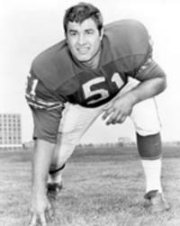
Bob Kalsu
RETURN TO INDEX |
U.S. Army


 |
All-American tackle at the University of Oklahoma and an eighth-round
draft pick by the Buffalo Bills of the American Football League in 1968.
He was a starting guard in 1968. He played the entire season and
was the Bills' team rookie-of-the-year.
Following the 1968
season, to satisfy his Reserve Officers' Training Corps (ROTC)
obligation, he entered the Army as a Second Lieutenant and arrived in
Vietnam in November 1969 as part of the 101st Airborne Division.
He was killed in action on July 21, 1970 when his unit came under enemy
mortar fire at FSB Ripcord near the A Shau Valley. |
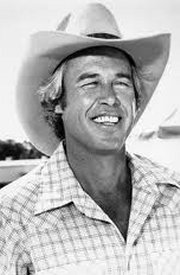
Steve Kanaly
RETURN TO INDEX |
U.S. Army

 |
American actor, best known for his role as Ray Krebbs, foreman of the
Southfork Ranch, on the television soap opera
Dallas from 1978 to 1989. He reprised the role for the final
episode of the series in 1991, and again for the made-for-TV reunion
movie
Dallas: War of the Ewings in 1998. During Dallas' run, he also
guested in other series, including
Time Express in
1979. From 1994 to 1995, he also had a role on the ABC daytime drama
series All My
Children as "Seabone Hunkle".
Served in Vietnam as a radio operator with the First Air Cavalry
Division. |

Darwood Kaye
RETURN TO INDEX |
U.S. Army |
American child actor, most notable for his semi-regular role as
the snooty rich kid Waldo in the
Our Gang short
subjects series from 1937 to 1940. Minor roles in other films
included the musical
Best Foot Forward with Lucille Ball and
Kansas City
Kitty, playing the role of "Killer" in both. As an adult,
Smith became a Seventh-day Adventist pastor, ministering at several
churches until his accidental death in 2002.
Served for 18 months around the late 1940s or early 1950s. |
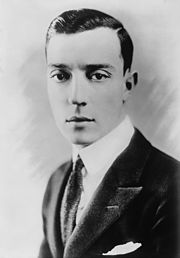
Buster Keaton
RETURN TO INDEX |
U.S. Army
 |
American comic
actor,
filmmaker, producer and
writer. He was
best known for his
silent films, in which his trademark was
physical comedy
with a consistently
stoic,
deadpan expression,
earning him the nickname "The Great Stone Face".
Served during WW1. |
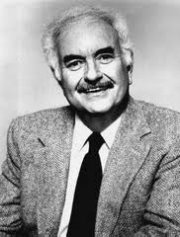
Bob Keeshan
RETURN TO INDEX |
U.S. Marine Corps
 |
American
television producer and
actor. He is most famous as the title character of the children's
television program
Captain Kangaroo,
which became an icon for millions of people during its 30-year run from
1955 to 1984. Keeshan also played the original "Clarabell the Clown"
on the
Howdy Doody
television
program.
In 1945, during WW2, he
enlisted in the
United
States Marine Corps Reserve, but was still in the U.S. when
Japan surrendered. |

Harvey Keitel
RETURN TO INDEX |
U.S. Marine Corps |
American actor. Some of his more noteable starring roles were in
Martin Scorsese's
Mean Streets
and
Taxi Driver,
Ridley Scott's
The Duellists
and
Thelma and Louise,
Quentin
Tarantino's
Reservoir Dogs
and
Pulp Fiction,
Jane Campion's
The Piano,
Abel Ferrara's
Bad Lieutenant,
James Mangold's
Cop Land,
Nicolas Roeg's
Bad Timing,
and
Theo Angelopoulos's
Ulysses' Gaze
(which
TIME Magazine called one of the Top 100 Films of All Time).
At the age of 16, he decided
to join the service, a decision that took him to
Lebanon, during
Operation Blue Bat in 1958. |
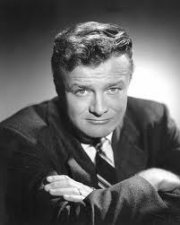
Brian Keith
RETURN TO INDEX |
U.S. Marine Corps


 |
American film, television, and
stage
actor who in his four decade-long career gained recognition for his work
in movies such as the 1961
Disney family film
The Parent Trap, the 1966 comedy
The Russians Are Coming, the Russians Are Coming, and the 1975
adventure saga
The Wind
and the Lion, in which he portrayed
Theodore
Roosevelt. On television, two of his best known roles were
that of a widowed uncle turned bachelor: Bill Davis, in the 1960s
sitcom
Family Affair,
and a tough judge in the 1980s drama
Hardcastle and McCormick.
Served during WW2 as an
air gunner in the
rear cockpit of a two-man
Douglas SBD
Dauntless dive-bomber in the Pacific Theater and received an
Air Medal. |
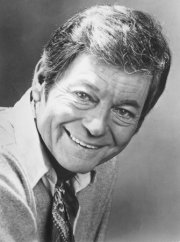
DeForest Kelley
RETURN TO INDEX |
U.S. Army Air Forces
 |
American actor known for his iconic roles in Westerns and as Dr. Leonard
"Bones" McCoy of the USS Enterprise in the television and film series
Star
Trek. Kelley's acting career began with the feature film
Fear in the Night (1947). By the mid-1950s he started to
appear in many films:
House of Bamboo (1955),
Illegal (1955),
The View from Pompey's Head (1955),
Tension at Table Rock (1956),
The Man in the Gray Flannel Suit (1956),
Gunfight at the O.K. Corral (1957), and
Raintree County (1957). For nine years, Kelley primarily
played villains. He built up an impressive list of credits, alternating
between television and motion pictures.
Served in WW2 as an enlisted man in a bomber between March 10, 1943, and
January 28, 1946. |
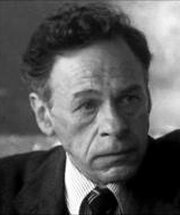
Mike Kellin
RETURN TO INDEX |
U.S. Navy
 |
American actor. He was most often cast as tough guys, both
good and evil. He made his Broadway debut in 1949 in
At War with
the Army and eventually earned a
Tony nomination in 1956 for his acting in the Musical
Pipe Dream. Kellin also played in an episode on Lost in Space "The Deadly
Games Of Gamma 6" as Myko.
Served as a
Lieutenant
Commander during WW2.
|
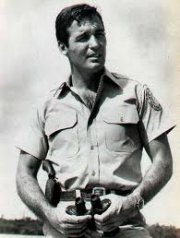
Brian Kelly
RETURN TO INDEX |
U.S. Marine Corps

 |
American actor best known for his role as Porter Ricks, the widowed
father of two sons on the NBC
television series
Flipper, and as Scott Ross in the
ABC advernture series
Straightaway,
with co-star
John Ashley.
Served in the
Korean War. |
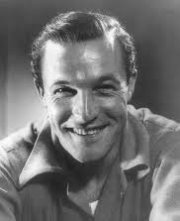
Gene Kelly
RETURN TO INDEX |
U.S. Navy
 |
American dancer, actor,
singer, film director and producer, and choreographer. Kelly was known
for his energetic and athletic dancing style, his good looks and the
likeable characters that he played on screen. Although he is known
today for his performances in
Singin' in
the Rain and
An American
in Paris, he was a dominant force in Hollywood musical films
from the mid 1940s until this art form fell out of fashion in the late
1950s.
At the end of 1944, Kelly enlisted in the U.S. Naval Air
Service and was commissioned as lieutenant junior grade. He was
stationed in the Photographic Section, Washington D.C., where he was
involved in writing and directing a range of documentaries, and this
stimulated his interest in the production side of film-making. |
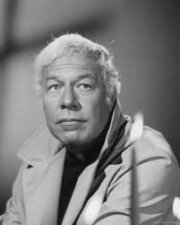
George Kennedy
RETURN TO INDEX |
U.S. Army

 |
American
actor who has appeared
in over 200
film and
television
productions. He is perhaps most familiar as the convict Dragline in
Cool Hand Luke
(for which he won an Academy Award), airline troubleshooter Joe Patroni
in the
Airport series of disaster movies from the 1970s and as Captain
Ed Hocken in the
Naked Gun series of comedy films.
Spent 16 years in the service
seeing combat in WW2 with Patton's Third Army in the European Theater.
He later worked in the Armed Forces radio. |
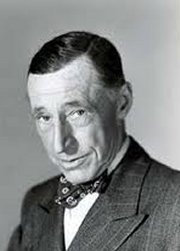
Percy Kilbride
RETURN TO INDEX |
U.S. Army
 |
American character actor.
The son of Irish immigrants, he made a career of playing country hicks,
most memorably as Pa Kettle in the
Ma and Pa Kettle series of feature films. He first played an
18th-century French dandy in
A Tale of Two Cities. His film debut was as "Jakey" in
White Woman (1933). He left Broadway for good in 1942.
In 1945, he appeared in
The Southerner.
Served in WW1. He was a private in Company B, 317 Infantry, 80th
Division in France. |
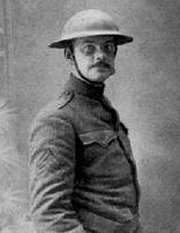
Joyce Kilmer
RETURN TO INDEX |
U.S. Army


 |
American journalist, poet,
literary critic, lecturer, and editor. Though a prolific poet
whose works celebrated the common beauty of the natural world as well as
his religious faith, Kilmer is remembered most for a short poem entitled
"Trees" (1913), which was published in the collection Trees and Other
Poems in 1914. While most of his works are unknown, a select few
of his poems remain popular and are published frequently in anthologies.
Several critics, both Kilmer's contemporaries and modern scholars,
disparaged Kilmer's work as being too simple, overly sentimental, and
suggested that his style was far too traditional, even archaic.
In April 1917, Kilmer enlisted in the Seventh Regiment of the New York
National Guard. In August, Kilmer was initially assigned as a
statistician with the U.S. 69th Infantry Regiment, of the 42nd "Rainbow"
Division, and quickly rose to the rank of Sergeant. Though he was
eligible for commission as an officer and often recommended for such
posts during the course of the war, Kilmer refused stating that he would
rather be a sergeant in the Fighting 69th than an officer in any other
regiment. Kilmer sailed to Europe with his regiment on October 31,
1917, arriving in France two weeks later. Kilmer sought more
hazardous duty and was transferred to the Regimental Intelligence
Section, in April 1918. During the
Second Battle of Marne, there was heavy fighting throughout the last
days of July 1918, and on July 30, 1918, Kilmer volunteered to accompany
Major William "Wild Bill" Donovan when Donovan's Battalion (1-165th
Infantry) was sent to lead the day's attack. During the course of
the day, Kilmer led a scouting party to find the position of a German
machine gun. When his comrades found him, some time later, they
thought at first that he was peering over the edge of a little hill,
where he had crawled for a better view. When he did not answer
their call, they ran to him and found him dead. According to
Father Duffy: “A bullet had pierced his brain. His body was carried in
and buried by the side of Ames. God rest his dear and gallant soul.
Kilmer died, likely immediately, from a sniper's bullet to the head near
Muercy Farm, beside the Ourcq River near the village of
Seringes-et-Nesles, in France, on July 30, 1918 at the age of 31.
For his valor, Kilmer was posthumously awarded the Croix de Guerre (War
Cross) by the French Republic. |
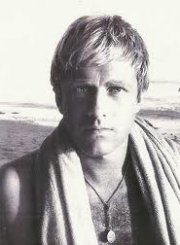
Aron Kincaid
RETURN TO INDEX |
U.S. Coast Guard
Reserve
 |
American actor perhaps best
known for playing Killer Croc on
Batman: The Animated Series and Sky Lynx on
The Transformers. He also voiced characters for
The Smurfs, and
DuckTales, among others. In his later years he also had
careers as a model and an artist. Kincaid appeared in the 1965
comedy "The Girls on the Beach" and had roles in "Beach Ball" and "Ski
Party," and made what was billed as a "guest appearance" in "Dr.
Goldfoot and the Bikini Machine." His other film roles include the
Disney musical "The Happiest Millionaire," "The Proud and the Damned"
and a cameo in the slasher film
Silent
Night, Deadly Night. He also made guest appearances on TV
series such as "The Beverly Hillbillies" and "Get Smart" before moving
to San Francisco in the early 1970s and launching a successful career as
a model.
Following graduation from UCLA in 1962, Aron enlisted in the Reserves. |
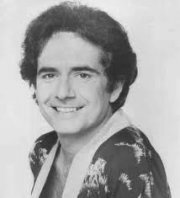
Richard Kline
RETURN TO INDEX |
U.S. Army

 |
American actor and
television
director. He is best known for playing the sleazy neighbor and used
car salesman, Larry
Dallas, on the
sitcom,
Three's Company.
Served in the
Vietnam War. |
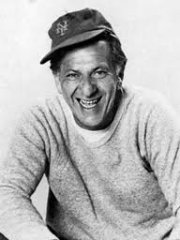
Jack Klugman
RETURN TO INDEX |
U.S. Army
 |
American stage, film, and
television actor known for his roles in
sitcoms,
movies,
television,
and on
Broadway. He is perhaps best-known for his role as actor
Tony Randall's
sloppy roommate
Oscar Madison in the American television series
The Odd Couple during the 1970s and for his starring role in
Quincy, M.E.
in the 1970s and 1980s.
Served in WW2. |
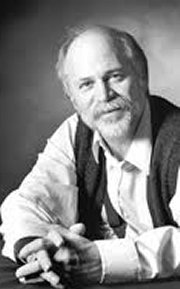
Ron Kovic
RETURN TO INDEX |
U.S. Army



 |
American writer who was
paralyzed in the Vietnam War. He is best known as the author of
the memoir
Born
on the Fourth of July, which was made into an Academy
Award–winning movie directed by Oliver Stone, with Tom Cruise playing
Kovic. Kovic received the Golden Globe Award for Best Screenplay.
He was also nominated for an Academy Award for Best Adapted Screenplay
which he co-wrote with Stone.
Volunteered for his first
tour of duty and was deployed to Vietnam in December 1965 as a member of the
3rd Battalion, 7th Marines H&S Company. In June 1966, he volunteered for
First Reconnaissance Battalion where he participated in 22
long range reconnaissance patrols in enemy territory. He returned home on
January 15, 1967 after a 13 month tour of duty, and was assigned to the
2nd Marine
Aircraft Wing at
Cherry Point, North Carolina. Several months later he volunteered to return
to Vietnam a second time. On January 20, 1968, while leading an attack on a village just north
of the
Cua Viet River in the
Demilitarized Zone, he was shot while leading his squad across an open area.
He was shot first in the right foot, which blew out the back of his heel, then
again through the right shoulder, suffering a
collapsed lung and a
spinal cord injury
that left him paralyzed from the chest down. The first Marine that tried to save
him was shot through the heart and killed, then a second Marine carried Kovic to
safety through heavy enemy fire. He then spent a week in an
intensive care ward in Da
Nang.
He was
awarded the
Bronze Star with "V" device for valor and the
Purple Heart. |
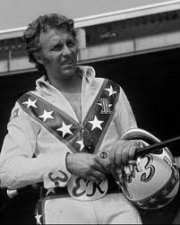
Evel Knievel
RETURN TO INDEX |
U.S. Army |
American
daredevil and entertainer. In his career he attempted over 75
ramp-to-ramp
motorcycle jumps
between 1965 and 1980, and in 1974, a failed jump across
Snake River Canyon in the
Skycycle X-2, a
steam-powered rocket. The 37 broken bones he suffered during his career
earned an entry in the
Guinness Book of World Records as the survivor of "most bones
broken in a lifetime.
Served in the late 1950s.
His athletic ability allowed him to join the track team where he was a
pole vaulter. |
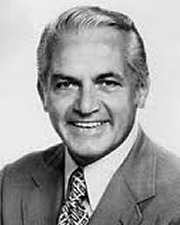
Ted Knight
RETURN TO INDEX |
U.S. Army

 |
American actor best known for playing the
comedic
role of Ted Baxter
on
The Mary Tyler Moore Show, Henry Rush on
Too Close for Comfort, and Judge Elihu Smails in
Caddyshack.
Served in WW2 as a member of
A Company, 296th Engineer Combat Battalion, earning five
battle stars while serving in the
European Theatre. |
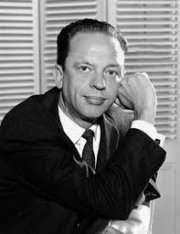
Don Knotts
RETURN TO INDEX |
U.S. Army
 |
American
comedic
actor best known for his portrayal of
Barney Fife on
the 1960s television sitcom
The Andy
Griffith Show, a role which earned him five
Emmy Awards. Knotts went on to star in a series of film
comedies which drew on his high-strung persona from the TV series: he
had a cameo appearance in
It's a Mad, Mad, Mad, Mad World (1963), and starred in
The
Incredible Mr. Limpet (1964),
The
Ghost and Mr. Chicken (1966),
The
Reluctant Astronaut (1967),
The
Shakiest Gun in the West (1968),
The Love God?
(1969) and
How to Frame a Figg (1971).
He also played landlord
Ralph Furley on
the 1970s television
sitcom
Three's Company.
Served in WW2 and spent most
of his service entertaining troops. |
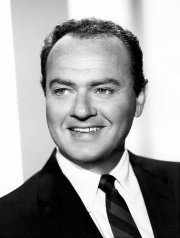
Harvey Korman
RETURN TO INDEX |
U.S. Navy
 |
American comedic actor who performed in television and movie productions
beginning in 1960. His big break was being a featured performer on
The Danny Kaye Show, but he is best remembered for his performances
on the sketch comedy series
The Carol Burnett Show and in several films by Mel Brooks, most
notably as Hedley Lamarr in
Blazing Saddles. His early television work included voice-over
work as the Great Gazoo on
The Flintstones. He appeared on numerous television programs,
including the role of Blake in the 1964 episode Who Chopped Down the
Cherry Tree?. From 1964 to 1966, he appeared three times in
consecutive years on
The Munsters. His film roles inlcude
Huckleberry Finn (1974),
High Anxiety (1977),
Herbie Goes Bananas (1980),
History of the World, Part I (1981),
Trail of the Pink Panther (1982),
Curse of the Pink Panther (1983), and
Munchies (1987). In later years he did voice work for
The Secret of NIMH 2: Timmy to the Rescue. In his final Mel
Brooks film he starred as the zany Dr. Seward in the 1995 film
Dracula: Dead and Loving It.
Served in WW2. |
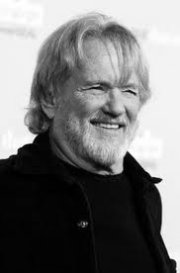
Kris
Kristofferson
RETURN TO INDEX |
U.S. Army
 |
American musician, actor, and writer. He is
known for hits such as
Me
and Bobby McGee,
Sunday
Mornin' Comin' Down, and
Help
Me Make It Through the Night. He appeared in
Blume in Love
and
Pat Garrett and Billy the Kid. He continued acting, in
Bring Me the Head of Alfredo Garcia,
Convoy (1978),
Alice Doesn't Live Here Anymore,
Vigilante Force,
and
A Star Is Born, for which he received a Golden Globe Award for Best
Actor. In the 1980s he partnered with Willie Nelson, Waylon
Jennings, and Johnny Cash to form the supergroup
The Highwaymen. In 2004 he was inducted into
the Country Music Hall of Fame.
Lone Star (1996) reinvigorated Kristofferson's acting career, and he
soon appeared in
Blade, Blade II,
Blade: Trinity,
A Soldier's Daughter Never Cries,
Fire Down Below,
Tim Burton's remake of
Planet of the Apes,
Chelsea Walls,
Payback, The
Jacket and
Fast Food Nation.
Served from 1960 to 1965 and
achieved the rank of Captain. He became a helicopter pilot after
receiving flight training at Fort Rucker, Alabama. He also
completed Ranger School. During the early 1960s, he was stationed in
West Germany as a member of the 8th Infantry Division. He
volunteered for Vietnam as a helicopter pilot, but instead was offered a
professor of English Literature position at USMA West Point.
Disappointed that he was not allowed to fight in Vietnam, he resigned
his position in 1965. |
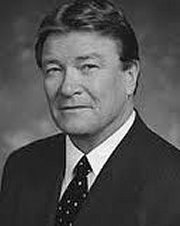
Steve Kroft
RETURN TO INDEX |
U.S. Army


 |
American
journalist and a longtime correspondent for
60 Minutes.
His investigative reporting has garnered him much acclaim, including
three
Peabody Awards and nine
Emmy awards, one of which was an Emmy for Lifetime Achievement.
Drafted into the service and served in the
Vietnam War. He was assigned to the
25th Infantry Division in
Cu Chi, where he was a reporter for the
Armed Forces Network; he covered the Division's participation in the
invasion of
Cambodia.
He won several Army journalism awards for his work and a
Bronze Star for Meritorius Achievement. When the Division was redeployed, he was reassigned to the military
newspaper
Stars and Stripes as a correspondent and photographer. Received an honorable discharge from the army in 1971. |
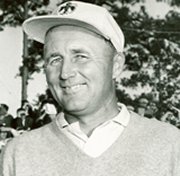
Ted Kroll
RETURN TO INDEX |
U.S. Army


 |
American professional golfer. He began a 34 year PGA Tour career
in 1949. He won eight times on the tour, including three wins in
1956, when he topped the money list with earnings of $72,836.
Kroll played on three Ryder Cup teams: 1953, 1955, and 1957.
Served in WW2 and earned three Purple Hearts after being wounded four
times in the European Theater. |
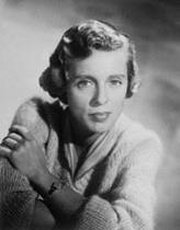
Nancy Kulp
RETURN TO INDEX |
U.S. Naval Reserve

 |
American character actress best known as Miss Jane Hathaway on the
popular television series
The
Beverly Hillbillies. Her film debut as a character actress was
in 1951 in The Model and the Marriage Broker. She appeared in
subsequent films, including
Shane,
Sabrina, and
A Star is Born. After working in television on
The Bob
Cummings Show, she returned to movies in
Forever, Darling,
The Three
Faces of Eve,
The Parent Trap and
The Aristocats.
In 1944 Kulp left the University of Miami to volunteer for United
States Naval Reserve service in WW2. As a member of the
WAVES (Women Accepted
for Volunteer Emergency Service), Lt. J. G. Kulp received several
decorations, including the American Campaign Medal and the Good Conduct Medal. She left the service in 1946. |
|

